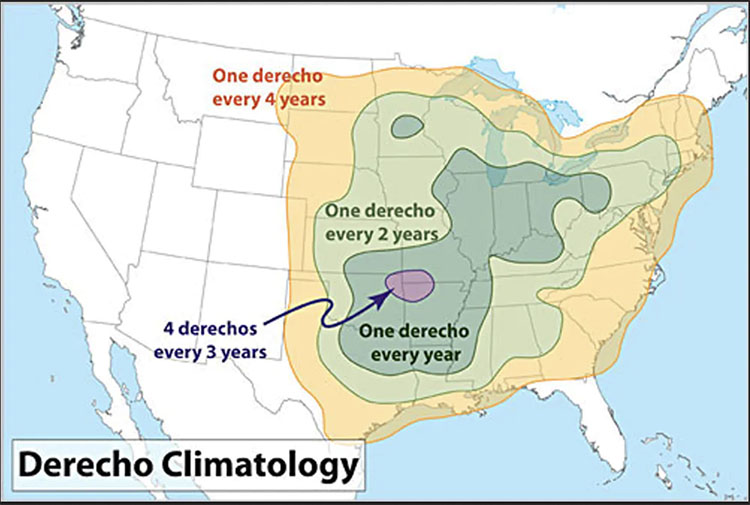What is a derecho? Russ Schumacher explains these rare but dangerous storm systems
Thunderstorms are common across North America, especially in warm weather months. About 10% of them become severe, meaning they produce hail 1 inch or greater in diameter, winds gusting in excess of 50 knots (57.5 miles per hour), or a tornado.
The U.S. recently has experienced two rarer events: organized lines of thunderstorms with widespread damaging winds, known as derechos.
Derechos occur mainly across the central and eastern U.S., where many locations are affected one to two times per year on average. They can produce significant damage to structures and sometimes cause “blowdowns” of millions of trees. Pennsylvania and New Jersey received the brunt of a derecho on June 3, 2020, that killed four people and left nearly a million without power across the mid-Atlantic region.
In the West, derechos are less common, but Colorado – where I serve as state climatologist and director of the Colorado Climate Center – experienced a rare and powerful derecho on June 6 that generated winds exceeding 100 miles per hour in some locations. Derechos have also been observed and analyzed in many other parts of the world, including Europe, Asia and South America.
Read The Conversation piece by Russ Schumacher, “What is a derecho? An atmospheric scientist explains these rare but dangerous storm systems,” in Source.
Photo at top: Derechos occur fairly regularly over large parts of the U.S. each year, most commonly from April through August. Dennis Cain/NOAA



